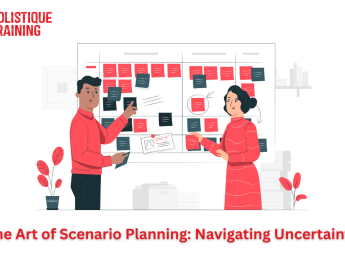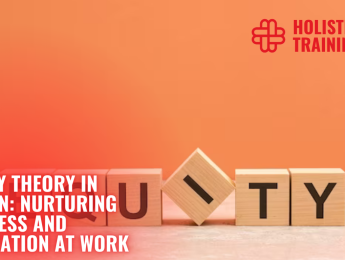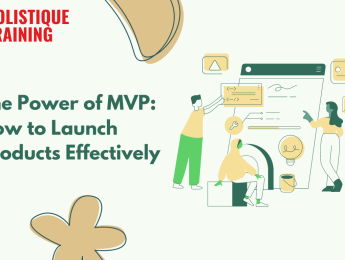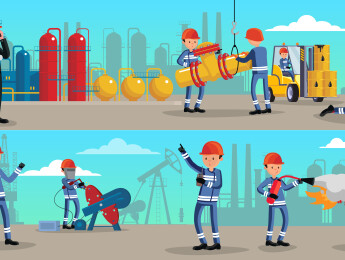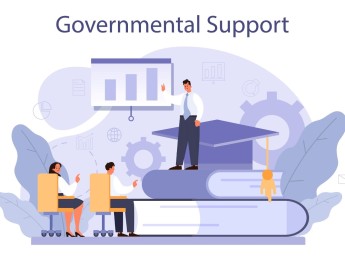- Table of Contents
- Introduction
- What Is Resilience in the Workplace?
- Why Is Emotional Resilience Important at Work?
- 4 Employee Concerns During Uncertain Times
- Job Security
- Work-Life Balance
- Communication Gaps
- Professional Development
- 10 Ways to Build a More Resilient Workforce
- 1- Promote Open Communication
- 2- Foster a Growth Mindset
- 3- Provide Learning Opportunities
- 4- Establish Support Networks
- 5- Prioritise Mental Health
- 6- Encourage Work-Life Balance
- 7- Recognise and Reward Resilience
- 8- Flexibility in Work Arrangements
- 9- Promote Inclusivity
- 10- Invest in Leadership Development
- What Does the Research Say on Workforce Resilience?
- What Are the Obstacles to Workforce Resilience?
- Resistance to Change
- Lack of Resources
- Inadequate Training
- Poor Leadership
- Unhealthy Work Culture
- Tips for Becoming a More Resilient Leader
- 1- Lead by Example
- 2- Communicate Effectively
- 3- Prioritise Employee Well-being
- 4- Encourage Continuous Learning
- 5- Provide Feedback and Recognition
- 6- Build a Supportive Team Culture
- 7- Stay Adaptable
- 8- Empower Decision-Making
- 9- Cultivate Emotional Intelligence
- 10- Seek Feedback and Learn from Setbacks
- Conclusion
Introduction
Navigating the ever-changing landscape of the modern workplace requires more than just technical skills and industry knowledge. In a world that constantly throws curveballs, building a resilient workforce has become a strategic imperative for organisations seeking sustainable success. Resilience in the workplace goes beyond mere adaptability; it's about equipping employees and leaders with the emotional fortitude needed to face challenges head-on and emerge stronger. In this exploration, we delve into the intricacies of resilience, its importance in the workplace, the concerns employees harbour during uncertain times, and actionable strategies for fostering resilience at both individual and organisational levels.
What Is Resilience in the Workplace?
Resilience in the workplace is the capacity of individuals and teams to bounce back from setbacks, adapt to change, and thrive in the face of adversity. It's not just about weathering storms but also about learning and growing through the process. In a professional setting, resilience involves maintaining productivity and morale despite challenges, fostering a culture of collaboration, and embracing change as an opportunity for development.
Understanding resilience requires recognising its multifaceted nature. It's a dynamic blend of emotional, mental, and interpersonal strengths that collectively contribute to an individual's ability to cope with stressors and setbacks. Organisations that prioritise resilience recognise that employees who can navigate uncertainty are better equipped to contribute positively to the workplace.
Why Is Emotional Resilience Important at Work?
Emotional resilience is the cornerstone of a robust workforce. In the workplace, emotions are inextricably linked to performance, decision-making, and team dynamics. Employees who possess emotional resilience can manage stress effectively, maintain focus in high-pressure situations, and cultivate healthy working relationships. This resilience is not only beneficial for individual well-being but also contributes to a positive work environment.
During times of uncertainty, emotional resilience becomes even more critical. It acts as a buffer against burnout, helps employees navigate ambiguity, and enables them to approach challenges with a growth mindset. Organisations that foster emotional resilience create a culture where individuals feel supported, valued, and empowered to contribute their best, even in challenging circumstances.
4 Employee Concerns During Uncertain Times
Uncertain times often cast a shadow of apprehension over the workforce, triggering a spectrum of concerns that can ripple through an organisation. Understanding and addressing these concerns is paramount for fostering a resilient workforce. Let's delve into the four primary anxieties that employees grapple with during periods of uncertainty:
Job Security
The cornerstone of employee concerns during uncertain times is undoubtedly job security. The fear of layoffs, restructuring, or downsizing can permeate every corner of the workplace, creating an atmosphere of unease. Employees worry about the stability of their positions and the impact that organisational changes may have on their livelihoods.
To assuage these concerns, organisations need to prioritise transparent communication. Regular updates from leadership about the state of the company, its strategies, and the reasoning behind any changes can provide employees with a sense of understanding and control. Additionally, offering career development opportunities and showcasing a commitment to retaining talent can help instil confidence in the workforce.
Work-Life Balance
The blurred lines between professional and personal life have become increasingly prevalent, particularly with the rise of remote work. While flexibility is a valuable asset, it can also be a double-edged sword, leading to concerns about an imbalance between professional responsibilities and personal well-being.
Organisations must actively promote a culture that values work-life balance. Encouraging employees to set clear boundaries, take breaks, and unplug outside of working hours can contribute to a healthier and more sustainable work environment. Implementing policies that support flexible schedules and remote work, coupled with initiatives to combat burnout, demonstrates a commitment to the overall well-being of the workforce.
Communication Gaps
Uncertain times often give rise to heightened levels of anxiety fueled by misinformation and communication gaps. Rumours and speculation can run rampant in the absence of clear and timely communication from leadership, creating a breeding ground for uncertainty.
To mitigate this concern, organisations must prioritise open and transparent communication channels. Regular town hall meetings, updates from leadership, and clear guidelines for disseminating information can help bridge communication gaps. Creating a culture where questions are encouraged and promptly addressed fosters a sense of trust and stability.
Professional Development
The fourth major concern that employees harbour during uncertain times revolves around their professional development. The fear of stagnation, reduced opportunities for skill enhancement, and limited career growth can impact morale and engagement.
Organisations can address this concern by investing in continuous learning programs. Offering skill development opportunities, workshops, and mentorship programs communicates a commitment to employee growth. Providing access to resources and tools that facilitate learning, even in challenging times, empowers employees to stay relevant and adaptable.
In essence, recognising and actively addressing these employee concerns is pivotal for creating a resilient workforce. Organisations that prioritise transparency, work-life balance, effective communication, and continuous learning not only alleviate employee anxieties but also lay the foundation for a culture that thrives in the face of uncertainty. By understanding the unique challenges employees face during uncertain times, organisations can tailor their strategies to build a resilient and empowered workforce ready to weather any storm.
10 Ways to Build a More Resilient Workforce
Building a resilient workforce requires a comprehensive approach that goes beyond reactive measures. Organisations aiming to fortify their teams against the storms of uncertainty must proactively implement strategies that nurture resilience at both individual and collective levels. Here are ten actionable ways to build a more resilient workforce:
1- Promote Open Communication
Encouraging a culture of open and transparent communication is foundational to resilience. Regularly update employees on organisational changes, challenges, and successes. Town hall meetings, newsletters, and accessible leadership help create an environment where information flows freely, reducing uncertainty and fostering trust.
2- Foster a Growth Mindset
Resilience thrives in an environment that embraces a growth mindset. Encourage employees to view challenges not as insurmountable obstacles but as opportunities for growth and learning. Leadership plays a pivotal role in setting this tone, emphasising that setbacks are part of the journey toward success.
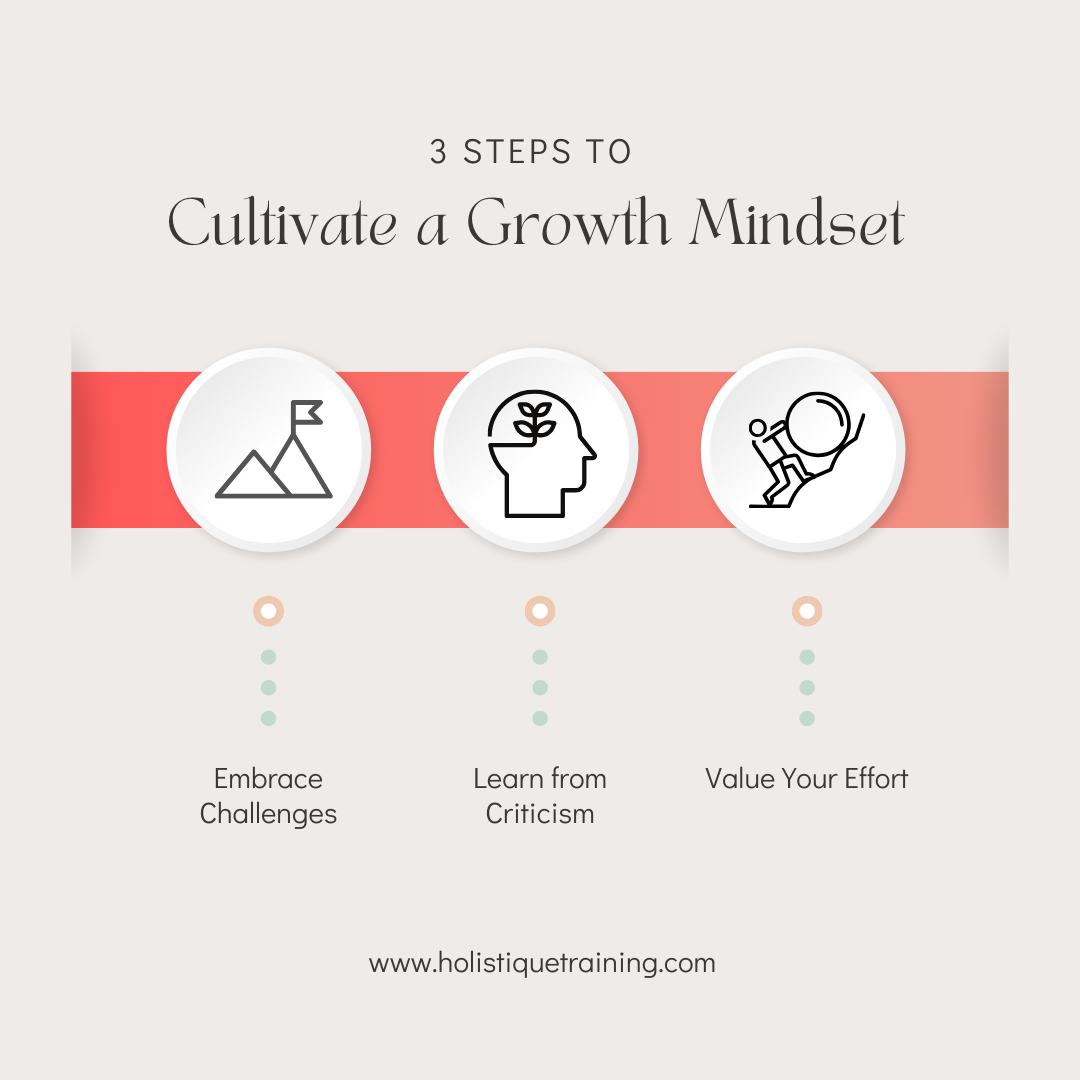
3- Provide Learning Opportunities
Continuous learning is a cornerstone of resilience. Invest intraining programs, workshops, and online courses that empower employees with new skills. A learning-centric environment not only addresses concerns about professional development but also equips the workforce with the tools needed to adapt to evolving demands.
4- Establish Support Networks
Resilience flourishes in a supportive community. Create formal and informal support networks within the organisation. Mentorship programs, peer support initiatives, and affinity groups foster connections, enabling employees to share experiences, seek guidance, and navigate challenges together.
5- Prioritise Mental Health
Recognising the interplay between mental health and resilience is crucial. Implement initiatives that prioritise mental well-being, such as employee assistance programs, counselling services, and mindfulness training. Providing resources and destigmatising mental health concerns contribute to a more resilient workforce.
6- Encourage Work-Life Balance
Work-life balance is the bedrock of sustained performance and resilience. Set clear expectations regarding work hours, promote the importance of breaks, and discourage a constant "always-on" mentality. Initiatives that support work-life balance, such as flexible schedules and remote work options, contribute to employee well-being.
7- Recognise and Reward Resilience
Actively acknowledge and reward resilient behaviour. Publicly recognising employees who exemplify resilience reinforces the value of this trait within the organisation. Whether through formal awards, shout-outs in team meetings, or inclusion in organisational communications, recognition fosters a positive work environment.
8- Flexibility in Work Arrangements
Providing flexibility in work arrangements is essential for fostering resilience. Recognise that employees have diverse needs and circumstances. Offering flexible work schedules, remote work options, and adaptable policies demonstrates a commitment to supporting employees in achieving a healthy work-life integration.
9- Promote Inclusivity
Inclusive teams are inherently more resilient. Diversity of thought and perspective enhancesproblem-solving and creativity. Fostering an inclusive workplace culture where all employees feel valued and heard contributes to organisational resilience. Initiatives that promote diversity and inclusion should be embedded in recruitment, training, and day-to-day operations.
10- Invest in Leadership Development
Resilient leaders are catalysts for organisational resilience. Invest inleadership development programs that equip leaders with the skills needed to navigate uncertainty, lead with empathy, and inspire their teams. Leadership sets the tone for the entire organisation, and resilient leaders are instrumental in fostering a positive and adaptive workplace culture.
Implementing these strategies collectively creates a synergistic effect, weaving resilience into the fabric of the organisation. By addressing individual concerns, nurturing a culture of learning and support, and empowering leaders to guide with resilience, organisations lay the groundwork for a workforce that not only withstands challenges but thrives in the face of uncertainty. Building resilience is an ongoing journey that requires commitment, adaptability, and a shared vision of a resilient future.
What Does the Research Say on Workforce Resilience?
Studies have consistently demonstrated the substantial benefits of resilience in the workplace. Resilient employees exhibit higher job satisfaction, showcasing a positive correlation between resilience and overall job contentment. Additionally, these individuals tend to demonstrate greater longevity in their employment, emphasising the role resilience plays in fostering employee retention. Moreover, resilient employees exhibit heightened productivity and engagement, contributing to a more dynamic and effective work environment. This adaptability also extends to stress management, as resilient individuals demonstrate an ability to handle stress and setbacks effectively. Importantly, research underscores that resilient employees not only endure challenges but actively learn and grow from their experiences, solidifying the pivotal role of resilience in personal and professional development.
What Are the Obstacles to Workforce Resilience?
While building a resilient workforce is a worthy goal, several obstacles can hinder progress. These obstacles include:
Resistance to Change
Resistance to change is a formidable obstacle to building workforce resilience. Human nature tends to gravitate toward familiarity and predictability. Research reveals that 73% of employees affected by change report encountering moderate to high stress levels. So, employees may resist new processes, technologies, or organisational structures, fearing the unknown. Overcoming this obstacle requires a strategic and empathetic approach to change management, emphasising the benefits and opportunities that change brings.
Lack of Resources
Limited resources, whether financial or human, pose a significant challenge to resilience-building initiatives. Adequate investment is required for training programs, mental health resources, and other supportive measures. Organisations must carefully prioritise resource allocation, recognising that the long-term benefits of a resilient workforce outweigh the short-term costs.
Inadequate Training
Insufficient training on resilience and coping strategies can leave employees ill-equipped to navigate challenges effectively. While training programs are crucial, their success depends on their relevance and accessibility. Organisations should invest in comprehensive training that addresses the diverse needs of their workforce, promoting not only technical skills but also emotional intelligence and adaptability.
Poor Leadership
Leadership plays a pivotal role in shaping the culture of an organisation. Poor leadership, characterised by a lack of empathy, transparency, or effective communication, can undermine efforts to build resilience. Leaders who fail to inspire trust and confidence may find it challenging to foster a positive and adaptive work environment. Addressing this obstacle requires a commitment to leadership development and cultivating a leadership style that aligns with resilience-building principles.
Unhealthy Work Culture
Research indicates that a robust workplace culture is deemed crucial for success by 94% of entrepreneurs and 88% of job seekers. A toxic work culture characterised by high levels of stress, competition, and distrust can erode resilience. A culture that prioritises individual achievements over collective well-being can hinder collaboration and open communication. Overcoming this obstacle involves a cultural shift, emphasising the importance of collaboration, support, and a shared sense of purpose.
Understanding these obstacles is crucial for organisations seeking to create a resilient workforce. Each challenge requires a tailored approach, recognising that the path to resilience is not a one-size-fits-all journey. By acknowledging these obstacles and actively working to address them, organisations can navigate the complexities of building a resilient workforce and create an environment where employees can thrive in the face of uncertainty.
Table 1: Measuring Workplace Resilience Initiative Success
Metrics | Indicators | Evaluation Criteria |
Employee Well-being | Mental health, work-life balance | Surveys, absenteeism rates, turnover |
Team Collaboration | Communication, mutual support | Project outcomes, team satisfaction |
Adaptability | Change response, innovation | Successful implementations, ideas |
Productivity | Task completion, engagement | Metrics against set goals, feedback |
Learning and Growth | Training participation, skill acquisition | Personal and team development plans |
Tips for Becoming a More Resilient Leader
Leadership in the modern workplace demands more than just strategic acumen; it requires resilience. Leaders who embody resilience set the tone for their organisations, inspiring and guiding their teams through uncertainty. Here are tips for leaders aiming to cultivate resilience within themselves and, by extension, throughout their organisations:
1- Lead by Example
Resilience begins at the top. Leaders must embody the qualities they wish to see in their teams. Demonstrating composure, adaptability, and a positive outlook during challenges sets a powerful example for employees. When leaders navigate uncertainty with grace, they inspire confidence and resilience in their teams.
2- Communicate Effectively
Effective communication is a cornerstone of resilient leadership. Keep communication channels open and transparent, providing clarity and context during uncertain times. Regular updates, town hall meetings, and active listening demonstrate a commitment to keeping the team informed and engaged.
3- Prioritise Employee Well-being
Recognise that the well-being of your team directly impacts their ability to be resilient. Prioritise initiatives that support mental health, work-life balance, and overall job satisfaction. Show empathy and understanding, fostering a culture where employees feel valued and supported.
4- Encourage Continuous Learning
A resilient leader embraces a mindset of continuous learning and growth. Encourage your team to seek new skills and perspectives. Create a culture that views challenges as opportunities for development and learning. Leaders who foster a commitment to ongoing learning inspire innovation and adaptability.
5- Provide Feedback and Recognition
Regularly provide constructive feedback and recognise achievements, no matter how small. Positive reinforcement reinforces a positive work environment and motivates employees to overcome challenges. Acknowledging and celebrating resilience within the team reinforces its value.
6- Build a Supportive Team Culture
Cultivate a sense of belonging and support within your team. Encourage collaboration, open communication, and mutual support. Teams that work cohesively and support each other are more resilient, as they can navigate challenges collectively.
7- Stay Adaptable
Resilient leaders embrace change and encourage a flexible mindset. Be adaptable in your leadership approach, willing to pivot when circumstances require it. Leaders who can adapt to evolving circumstances demonstrate the agility needed to guide their teams through uncertainty.
8- Empower Decision-Making
Empower your team to make decisions within their roles. Autonomy instils a sense of ownership and responsibility, contributing to individual and collective resilience. Leaders who trust their teams to make informed decisions foster a culture of accountability and adaptability.
9- Cultivate Emotional Intelligence
Emotional intelligence is a crucial asset for resilient leaders. Understand and manage both your own emotions and those of your team members. Leaders who can navigate emotions effectively build trust and create a positive work environment.
10- Seek Feedback and Learn from Setbacks
Actively seek feedback from your team and be open to learning from setbacks. Resilient leaders view challenges as opportunities for growth and improvement. Embrace a mindset that encourages continuous improvement and demonstrates humility in the face of adversity.
In conclusion, resilient leadership is not just about weathering storms; it's about inspiring and guiding your team to thrive in the midst of uncertainty. By incorporating these tips into your leadership approach, you can contribute to building a resilient organisational culture that empowers individuals and teams to face challenges with strength and adaptability. Leadership, rooted in resilience, becomes a catalyst for positive change and sustained success.
Conclusion
In conclusion, building a resilient workforce is an ongoing process that requires a multifaceted approach. By addressing employee concerns, implementing strategies to enhance resilience, and cultivating a supportive work culture, organisations can create an environment where individuals and teams thrive in the face of uncertainty. As leaders embrace resilience both personally and professionally, they play a pivotal role in shaping a resilient future for their organisations. In the dynamic landscape of the modern workplace, resilience is not just a desirable trait; it's a strategic imperative for sustained success.
In your journey to cultivate workplace resilience, consider taking the next step towards excellence with our exclusive course, ‘Developing Emotional Resilience in the Workplace.’ This transformative program goes beyond theory, offering practical tools and insights to empower leaders and teams. Learn the art of emotional intelligence, effective communication, and proactive strategies to navigate challenges seamlessly. Elevate your organisation's resilience quotient and unlock a pathway to sustained success. Enrol today and embark on a transformative experience that will shape a resilient and thriving future for you and your team. Because in the ever-evolving workplace, mastering emotional resilience is not just an asset – it's your competitive edge.








